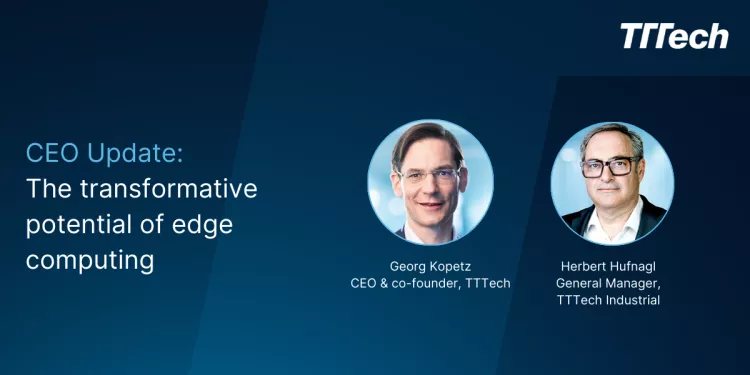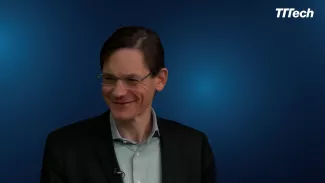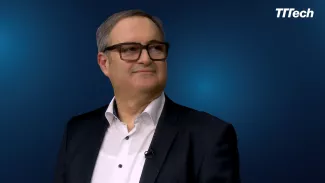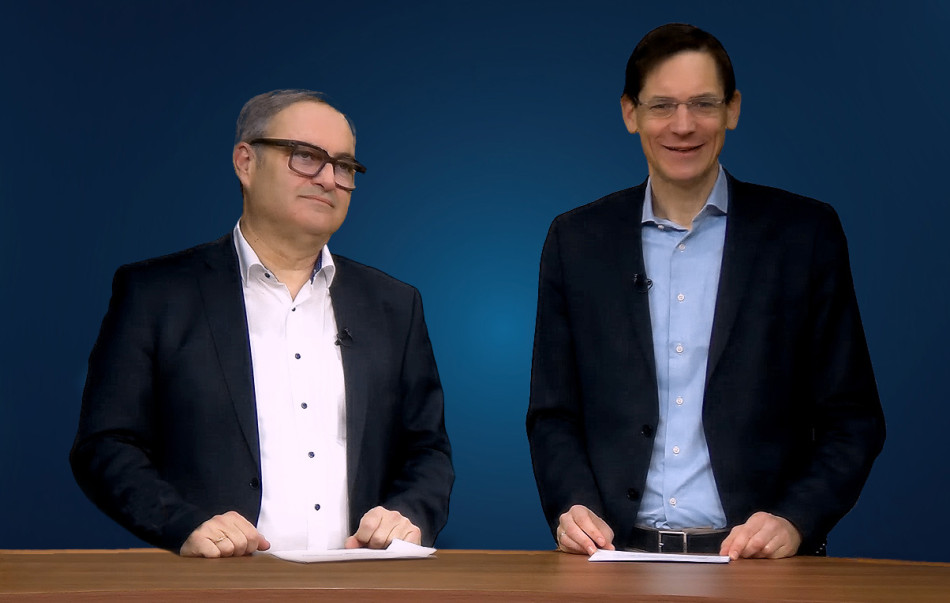
Welcome to a new edition of the CEO update. Herbert Hufnagl, General Manager of TTTech Industrial joined TTTech CEO and co-founder Georg Kopetz in the Studio as a special guest. Herbert, who has been with TTTech Industrial since 2022, has over 25 years of experience in industrial automation and the development of smart industrial solutions. Together they discussed the exciting topic of edge computing. Why did TTTech go into the field? What do machine builders use it for, and in which other industries may this groundbreaking technology benefit?
Georg, when and why did TTTech initially decide to invest in edge computing?
Georg: Our history with edge computing dates to the area of the early IoT movement. We had a great relationship with Cisco on IoT development. I was a founding member of the Cisco IoT steering committee in which we discussed the right architectures to get IoT out to the masses and to make it pervasive in different industries. A Fellow at Cisco, Flavio Bonomi, foresaw that the future of the IoT movement would be something for which he coined the word “fog computing”. Fog computing means that the cloud is pulled down to the machine by the gravity of the data so that we have a cloud-like architecture close to the machine. This enables IT-like mechanisms that we know from data centers, locally. Because IoT is about generating a lot of data; it's about reading a lot of different sensors; it’s about computing this data locally and trying to understand what’s happening in these systems. Therefore, you need much more compute power, you need to have real-time, safety, and security requirements at the edge. And all of this needs a new computer architecture. So together with Flavio, this is how we started the journey of fog computing, which later came to be called “industrial edge computing”.
Where do you see the role of edge computing today?

Georg: I think IoT will be pervasive in the next decades and edge computing will be one of those elements that will stay. Cloud and edge are not a contradiction, nor are they in competition, even. Rather, it’s a continuum from cloud to edge to sensor. You have to work with the data where it’s most suitable, most convenient, and most practical. And now in 2024, we are in the age of AI. Now, machine learning and labeling of data are on everybody’s minds. This gives edge computing an extra push because it is clear that in some of the applications, where real-time really matters, it is better to process the data where you have low latency, which is at the edge.
TTTech Industrial’s edge computing system is called Nerve because it acts as the nervous system of a machine. What are customers in the market looking for in an edge computing platform?
Herbert: Our customers use edge computing to gain a competitive advantage in their markets. One of our most important customer segments is machine builders and what gives them a competitive advantage is data, as Georg has mentioned. They want to use the data in their machines to develop new digital business models and to make better machines. Every machine integrates a key process, like welding, soldering, assembly etc. The machine builders’ promise to their customers is that they can perform this process better, faster, or more cost-effectively than the competition. The control system of a machine consists of a lot of data points that can be useful. In addition, sensors are applied to the core process to handle and predict processes better.

For example, one of our customers’ core processes is metal forming. In this process, there is a critical component - a tool that is subject to wear and tear.. So, the customer uses the data available in the machine’s control system, in addition to force sensors, to predict the wear condition of the tool. This gives the machine user the advantage of being able to order a new tool before the old one breaks, which avoids a very expensive machine downtime. We call this predictive maintenance, which is done by edge computers near the machine.
What then, is Nerve?
Herbert: Nerve is a software layer that can be installed on every industrial PC, which allows the customers to focus on their applications, like data, prediction, asset management, and visualization. You could say that Nerve takes care of everything else. This includes cybersecurity, edge hosting, cloud connection, realtime-database, for example.
Why is cybersecurity so important in edge computing?
Herbert: Cybersecurity is important because an edge computing platform has to be connected to the Internet. If you just do a local architecture, you will not get the full benefits. For example, you may want to connect all assets of a machine fleet to the cloud. You may want to further process the pre-processed data from edge computers in the cloud, to visualize data from a central point, or gain remote access to your machines. And if you want to connect machines, the topic of cybersecurity becomes crucial. TTTech Industrial has a process certification for the most common cybersecurity standard 62443. We are only the second company in Austria that has this certification, which makes us very proud. By the end of 2024, we will also have a product certification for Nerve, which means a secure base for our customers’ applications.
Subscribe to our newsletterand receive CEO updates directly to your inbox
What are some other defining features of Nerve?
Herbert: Another important thing is real-time behavior. Most of the successful data analysis and prediction solutions need high-speed sensor data from the core process. Nerve provides a Soft-PLC as a real-time component; it can be used to realize an Ethercat-Master to connect high-speed sensors to Remote IOs. Additionally, you have a lot of data already in the machine, for example, in the communication system.
In addition, our Nerve Management System, allows our customers to deploy new versions of software, or additional software, or new algorithms, like AI. The fantastic thing about Nerve is that this can be done by non-IT experts, like application experts, with their notebook computers, through the cloud.
What I think makes Nerve unique is not one single point, but a combination of all I have just mentioned.
How do you improve the product? What’s the role of customer feedback?
Herbert: We invest a lot of software resources every year to improve Nerve. Functional improvements mostly result from inputs from our customers. They need new features, new data channels, etc. On the other hand, we also develop non-functional features, like cybersecurity, for example. Our Nerve system has a few thousand software components. These are organized in a so-called software bill of materials. We are connected to a database, which tells us every day if there has been a security incident in one of the components that we use. Then we decide if this influences the security of Nerve, in which case we have to update it and give the update to our customers.
We also learned that we have to provide integration services to our customers. Nerve is the base, the platform layer, but the vertical application is unique to our customers. We help them to establish the connection to their specific sensors, with visualization, with real-time databases etc. and then they can embed their algorithms more easily.

Edge computing is a horizontal technology, which goes across multiple applications. In which other markets can it play a role?
Georg: In the past months we have identified that there is a potential product-market fit in the energy market, especially for distributed energy management. We are currently trying to pivot the topic of edge computing into energy management by actively working on new, innovative energy management systems, where we are trying to rethink the architecture in terms of security, performance, and availability in the continuum between cloud and edge. Many energy management systems nowadays are very cloud-centric. We believe that cloud is an essential element of a distributed energy management system, but we also believe that edge computing can be very important in this market.
What about autonomous vehicles? Do you see edge computing playing a role here?
Georg: Another area where we see edge computing emerging is smart farming, in our off-highway division TTControl, where we are seeing more and more edge systems. You are not only transferring data from the machine to the cloud, but you also want to pre-process the data, you want secure access, and you want to mix the data analytics, and the data logging.
Finally, we are moving from automation to autonomy. We firmly believe that in the future, every autonomous machine will be connected to the cloud and then, again, you need a high-performance infrastructure like edge computing because a simple gateway architecture is not enough to fulfill the stringent requirements of autonomous machines. Using an edge architecture allows you, for example, to update the machines in the field without shutting them down. But really, we can see edge computing in autonomous machines everywhere. From the space market to testing and validation, or digital twins.
Many thanks to both of you for these insights. Looks like edge computing has a bright future in many markets. We cannot wait to see what this technology will do to lift the industry to the next level.